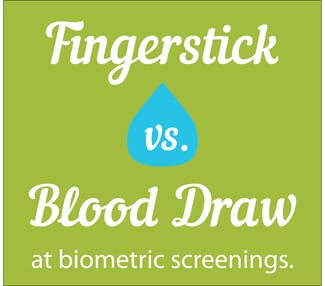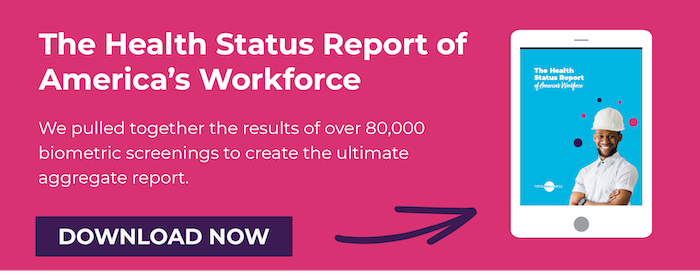 If you have a wellness program, you should definitely have regular biometric screenings. A staple event at these screenings is a blood test to measure things like cholesterol, glucose and triglycerides. These metrics give employees a baseline to help motivate them toward healthy behaviors.
If you have a wellness program, you should definitely have regular biometric screenings. A staple event at these screenings is a blood test to measure things like cholesterol, glucose and triglycerides. These metrics give employees a baseline to help motivate them toward healthy behaviors.
If you choose to do an onsite screening event, there are a few different ways to get a blood sample for these types of tests. You can draw blood with a fingerstick, or a venipuncture blood draw.
It’s important to look at the two options carefully and decide which works best for your company. You might want to consider what your employees wanted from wellness when you sought feedback from them (and you should’ve sought feedback!).
You might also want to look at the design of your wellness program. Do you use incentives? If so, do you incent these specific measurements? Employees might have concerns one way or another depending on what they’re getting rewarded for.
So what’s the big difference between the methods?
Fingerstick
The fingerstick method is just as it sounds. Our health professionals will prick the finger of your participants and squeeze out just enough blood to run the sample through our machines. This method is one of the least invasive methods of blood collection.
Aside from the ease of the process, other benefits include:
- The method is cheaper because less equipment and processing is being used.
- The method is faster because the sample doesn’t have to be sent to a lab for testing.
- The method is relatively easy to sell to employees because of its non-invasiveness.
While fingerstick is an excellent option, there are a few things you should know about its drawbacks. Even though it’s comparable, the fingerstick method can be slightly less accurate (national guidelines allow for a variance of +/- 8.9% for cholesterol) than a venipuncture blood draw. It's important to remember that fingersticks done during a wellness screening are not intended to be diagnostic. The goal is to provide the employee a health snap shot for comparison purposes.
Depending on the attitudes of your employees, this method could also be seen as less serious or legitimate because of its simplicity. If a biometric screening is a major part of your wellness program, you don’t want your employees feeling as though the event was not valuable.
Venipuncture Blood Draw
This method is a little more invasive and is similar to what you’ve experienced if you’ve had your blood drawn at the doctor's office. The method involves sticking a needle into a vein—usually at the crook of the arm—and collecting blood into a vial that will be sent to a lab for testing.
Some of the major benefits of choosing venipuncture blood draw include:
- The method is considered one of the most accurate measures.
- The method might be taken more seriously by participants because it is a more complex procedure.
- The method requires a bit more time from your employees, which creates an accessible and captive audience to hear the rest of your wellness initiatives.
A few drawbacks of venipuncture, besides being a more invasive procedure, are the cost and the stigma. Venipuncture blood draw is a bit more expensive than other techniques because not only is the collection equipment more complex, but the sample has to be sent to a lab for analysis. There is also a widespread stigma surrounding needles, so you might have employees that are unwilling to participate because of the potential pain and minimal risks associated with sticking a needle into their arm.
No matter which method you choose, testing these blood metrics regularly is a great way to help your employees track their progress. We’ll send to your event expert health professionals trained for whichever task you choose. So, take a look at your employees’ feedback and the design of your program, pick which method is best for your workforce, and let us take care of the rest!
Which method have you used in previous health screening events?



